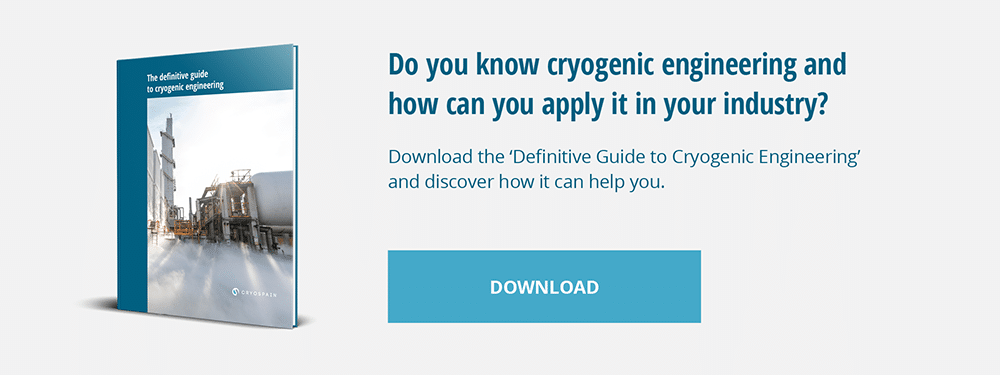Insulated vessels play an essential role in generating safe and efficient environments for the transportation, storage and use of many substances, including cryogenics. The many possibilities in their design mean that businesses should work with a trusted supplier that is able to conceive and manufacture exactly the vacuum insulated vessels they may need.
Keep reading to find out what exactly are insulated vessels and how to make sure your business selects the right ones.
What is a thermally insulated vessel?
A thermally insulated vessel is a part of an installation that allows for the storage and transportation of substances at a controlled temperature. These substances may be in a solid, liquid or gaseous state and typically require a restricted atmosphere to maintain their optimal conditions until they’re needed.
Insulated vessels are thus common across diverse industries that may be in need of having readily access to technical gases. Among their advantages are:
- Protection against exterior temperatures and phenomena, such as solar radiation
- A reduction of heat loss
- Guarantees an optimal storage of temperature-sensible substances, such as cryogenics
How do insulated vessels work?
The main technology that supports insulated vessels is the insulation system. It typically consists of an inner vessel (in charge of withstanding low temperatures) and an outer vessel, both insulated from each other.
Among other technical parts in such installations are pressure and vacuum safety valves.
You may like: Discover the latest advances in cryogenic technology
Insulated vessels: an adaptive technology
There are a number of factors to take into account when choosing the right insulated vessels, as these can be adapted according to each project’s needs.
- Sizes may vary and may even include the possibility of large-scale cryogenic storage
- Technologies may diverge in order to meet different substances’ needs, including different types of valves
- Materials used can range from stainless steel to carbon steel. Additionally, some common insulating materials include cellular glass, expanded perlite or rockwool.
This translates into the need to find a trusted partner when it comes to choosing the right insulated vessels, so that companies ensure they access efficient equipment that also meets their budget goals and product needs.
At the same time, insulated vessels are designed to meet specific regulations, including national and international legislation as well as quality standards. This includes the testing of vacuum insulated vessels so that safety is guaranteed.
All in all, because insulated vessels present such a range of diverse possibilities, trusted partners should be able to provide the right solutions to their clients’ needs.
For instance, at Cryospain we’ve recently been in charge of designing and implementing a vacuum insulated piping (VIP) project for the transfer of LNG in bunkering port terminals. Thus, we designed and manufactured 1.5 kilometers of vacuum-insulated piping according to the project’s specific needs
A different approach was needed for our cryogenic vacuum-insulated pipelines in the Netherlands where design engineers and draftsmen worked to develop a customized set of insulated vessels which was then sent to their final destination.
Things to keep in mind when working with insulated vessels
There are a number of factors that play an important part when designing insulated vessels and that shouldn’t be overlooked:
- Fatigue cycles in the system. For instance, those that are in operation may always be cold but others experiment cold and heat cycles that can potentially lead to failure.
- The quick opening of valves that is needed in certain operations might cause surges in insulated vessels that need to be analyzed in order to avoid issues.
- Because it’s not a completely rigid system and undergoes a series of thermal disparities, a thermally insulated-vessel system might experience certain displacements.
In order to guarantee that insulated vessels are correctly designed, manufactured and maintained, the use of professional software will provide the appropriate calculations and take into account the issues mentioned above.
Cryospain: our insulated vessel projects
At Cryospain, we’re experts in designing and manufacturing large scale vacuum insulated vessels. Through the use of cutting-edge technology and our team of expert engineers, we’re able to provide customized insulated vessels tailored to the needs of our clients.
Our cryogenic storage systems come at a range of sizes and capacities, starting from 500m3, bringing cutting-edge technical solutions to market in record time. These include vent valves and pressure and vacuum safety valves, guaranteeing the highest quality.
Additionally, our vacuum insulated vessels meet our clients’ required legislation, regulations and quality standards, including European Directive 2014/68/EU and the design code ASME VIII, div 1
At the same time, we provide a post-sale and maintenance service to our clients, so that their insulated vessels are always in good hands.
Want to learn more about insulated vessels and what specific features might meet your company’s needs? Get in touch with us so that our team of experts can analyze your case and let you know how we can help you.











 Contacte-nos
Contacte-nos